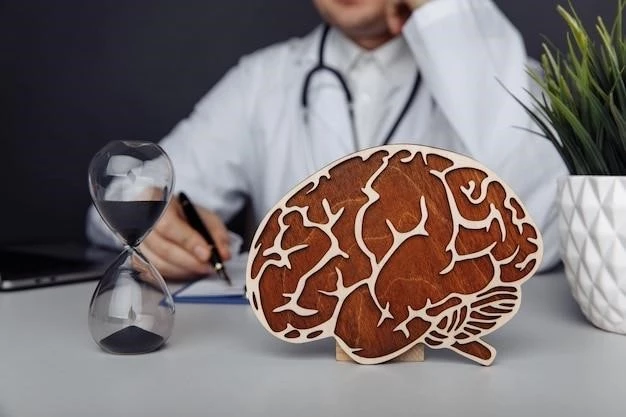Introduction to Subacute Cerebellar Degeneration
The condition of Subacute Cerebellar Degeneration involves the progressive weakening and damage of cerebellar cells, impacting motor coordination and balance․
Definition and Types of Cerebellar Degeneration
Cerebellar degeneration refers to the deterioration and weakening of cerebellar neurons, affecting motor coordination․ The two main types are paraneoplastic cerebellar degeneration, associated with tumors, and alcoholic or nutritional cerebellar degeneration, linked to alcohol consumption or nutritional deficiencies․
Causes and Risk Factors
The causes of subacute cerebellar degeneration include paraneoplastic syndrome, alcohol consumption, nutritional deficiencies, encephalitis, and certain infections․
Paraneoplastic Cerebellar Degeneration
Paraneoplastic cerebellar degeneration is a rare condition where the immune system mistakenly attacks cerebellar cells in response to an underlying tumor, leading to neurological symptoms․ This type of cerebellar degeneration primarily occurs in individuals with specific types of cancer, such as adenocarcinomas of the ovaries, uterus, or lungs․ Early recognition and appropriate management are crucial in addressing this challenging condition․
Alcohol and Nutritional Factors
Alcohol consumption and nutritional deficiencies can contribute to cerebellar degeneration․ Alcohol’s toxicity can harm cerebellar cells, while inadequate nutrition can lead to degenerative changes impacting motor coordination and cognitive function․
Encephalitis and Other Infections
Infections such as encephalitis can lead to cerebellar degeneration by causing inflammation and damage to brain tissues, impacting motor coordination and balance․ Proper diagnosis and prompt treatment of infections are crucial in preventing further neurological complications․
Epidemiology and Prevalence
Paraneoplastic cerebellar degeneration is rare but constitutes a notable paraneoplastic presentation, often associated with specific cancer types․ Extensive epidemiological studies are lacking due to the disease’s rarity․
Rare Nature and Frequency of Subacute Cerebellar Degeneration
Subacute cerebellar degeneration is a rare condition, often associated with specific cancer types and immune-mediated cerebellar ataxia․ Due to its rarity, extensive epidemiological studies are lacking, necessitating further research to understand its prevalence and impact․
Clinical Presentation and Symptoms
Patients with subacute cerebellar degeneration may experience symptoms such as progressive ataxia, balance issues, vertigo, nausea, and nystagmus․
Progressive Ataxia and Motor Coordination Issues
Patients with subacute cerebellar degeneration may present with progressive ataxia, causing challenges in motor coordination, walking, and balance․ These individuals may experience difficulties with precise movements and maintaining posture, often leading to a decline in overall motor function․
Vertigo, Nausea, and Nystagmus in Patients
Patients with subacute cerebellar degeneration may experience symptoms such as vertigo, nausea, and nystagmus, along with ataxia and balance issues․ These additional symptoms can significantly impact a patient’s quality of life and functionality․
Diagnostic Criteria and Evaluation
Diagnosing subacute cerebellar degeneration involves assessing symptoms like ataxia, vertigo, nausea, and nystagmus through a comprehensive neurological evaluation and imaging studies․
Revisions in Diagnostic Terminology for Rapidly Progressive Cerebellar Syndrome
A panel of international experts has recently proposed substituting the term ″subacute cerebellar degeneration″ with ″rapidly progressive cerebellar syndrome″ to better characterize the severe and rapid onset of bilateral cerebellar dysfunction․
The association between subacute cerebellar degeneration and cancer, often involving paraneoplastic syndromes, highlights the intricate relationship between tumor development and neurological dysfunction․

Association with Cancer and Paraneoplastic Syndromes
The intricate relationship between subacute cerebellar degeneration and cancer, often accompanied by paraneoplastic syndromes, underscores the importance of understanding the neurological implications of tumor development․
Management and Treatment Approaches
Managing subacute cerebellar degeneration involves medications, rehabilitation strategies, and addressing underlying causes such as tumors or infections․
Medication and Rehabilitation Strategies for Managing Cerebellar Degeneration
The management of subacute cerebellar degeneration involves a combination of medication to address symptoms and rehabilitation strategies to improve motor function and balance․ These approaches aim to alleviate symptoms and enhance the individual’s quality of life․
Prognosis and Long-Term Outlook
The prognosis for individuals with subacute cerebellar degeneration varies based on the underlying causes, response to treatment, and disease progression, impacting long-term neurological outcomes․
Neurological Prognosis and Challenges in Treating Underlying Tumors
The neurological prognosis for individuals with subacute cerebellar degeneration varies depending on the management of underlying tumors, complicating long-term outcomes and presenting challenges in treatment approaches aimed at addressing both neurological symptoms and tumor-related complications․
Research and Advances in Subacute Cerebellar Degeneration
Research on subacute cerebellar degeneration focuses on understanding the disease mechanisms, exploring treatment options, and addressing knowledge gaps to improve patient outcomes․
Current Studies and Knowledge Gaps in Understanding the Disease Mechanisms
Ongoing research on subacute cerebellar degeneration focuses on elucidating the disease mechanisms and addressing existing knowledge gaps to enhance diagnostic accuracy and treatment strategies, ultimately improving patient outcomes․
Support Organizations and Resources
Find support organizations like the Autoimmune Association for individuals with Subacute Cerebellar Degeneration, which can provide valuable information and assistance․
Information and Assistance Available for Individuals with Subacute Cerebellar Degeneration
Individuals with subacute cerebellar degeneration can access valuable information and assistance from support organizations like the Autoimmune Association to navigate their condition and access relevant resources․
Advancements in the management and care of subacute cerebellar degeneration aim to improve diagnostic accuracy, treatment strategies, and patient outcomes through ongoing research and innovation․

Future Directions in Management and Care
Future directions in managing subacute cerebellar degeneration involve enhancing diagnostic precision, optimizing treatment modalities, and focusing on innovative approaches to improve patient care and outcomes․
Complications and Associated Disorders
Aside from the primary impact on motor coordination, subacute cerebellar degeneration may be associated with complications such as spinocerebellar ataxias and other neurodegenerative conditions․
Spinocerebellar Ataxias and Other Neurodegenerative Conditions
Complications associated with subacute cerebellar degeneration may include spinocerebellar ataxias and other neurodegenerative disorders, highlighting the complexity of the disease and its impact on neurological function․
Conclusion and Summary
Subacute cerebellar degeneration is a complex condition involving the gradual deterioration of cerebellar cells, impacting motor coordination and neurological function․ With various underlying causes such as paraneoplastic syndromes and alcohol-related factors, the diagnosis and management of this disease require a comprehensive approach․ Ongoing research aims to enhance our understanding of subacute cerebellar degeneration, explore innovative treatments, and address the unmet needs of individuals affected by this condition․ Support organizations and resources play a vital role in assisting individuals with navigating the challenges associated with subacute cerebellar degeneration․ By focusing on advancements in diagnosis, management, and care, there is hope for improving the prognosis and long-term outcomes for those living with this neurological disorder․
